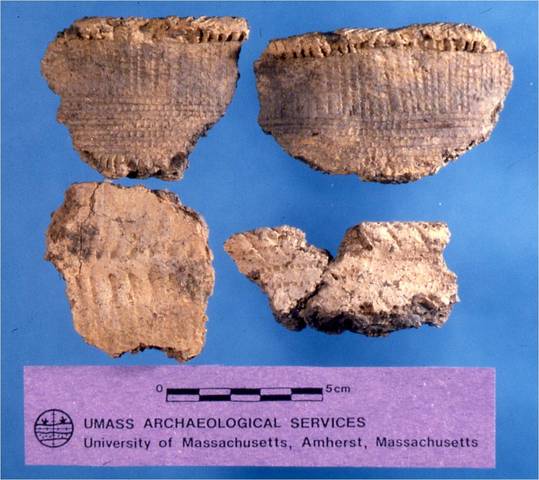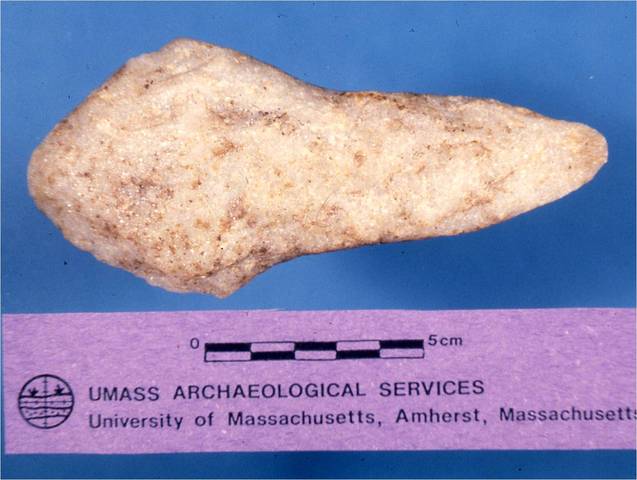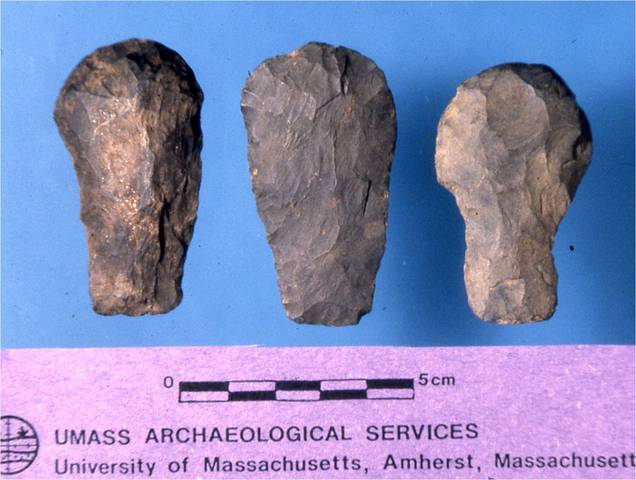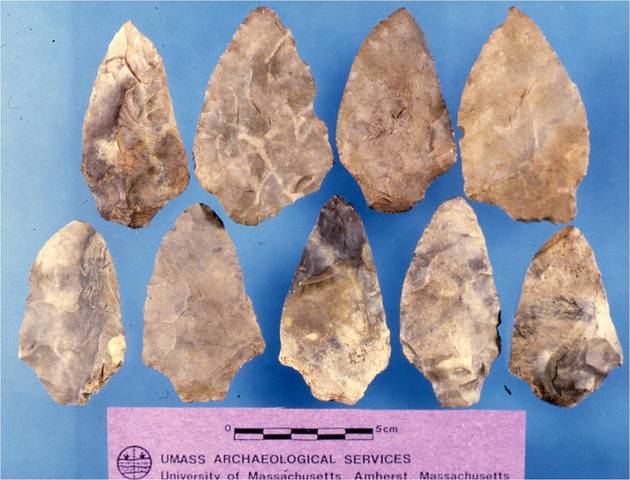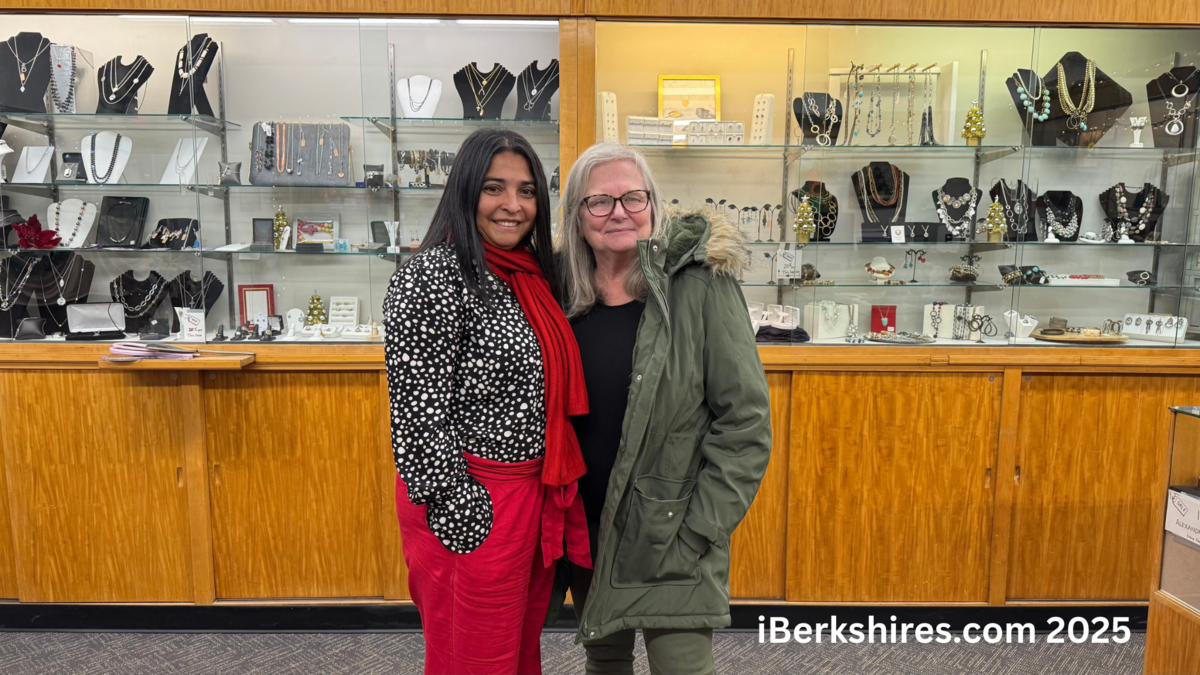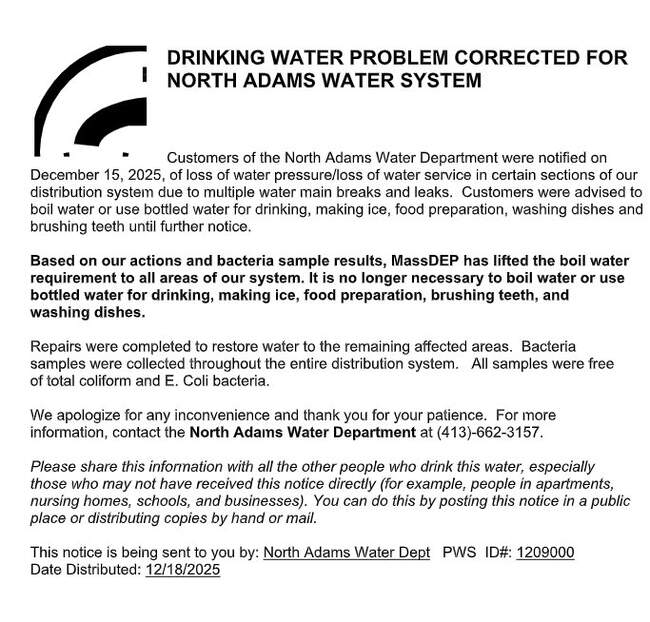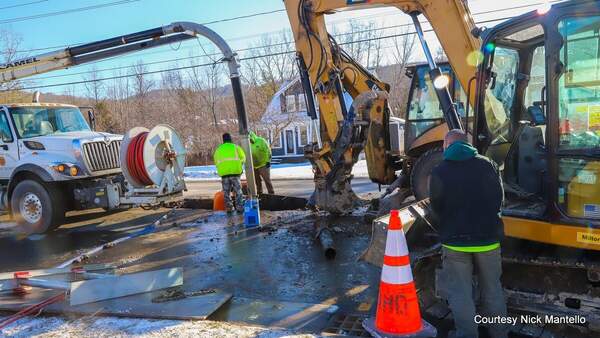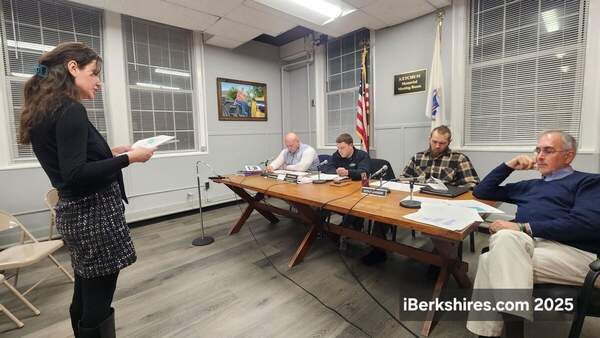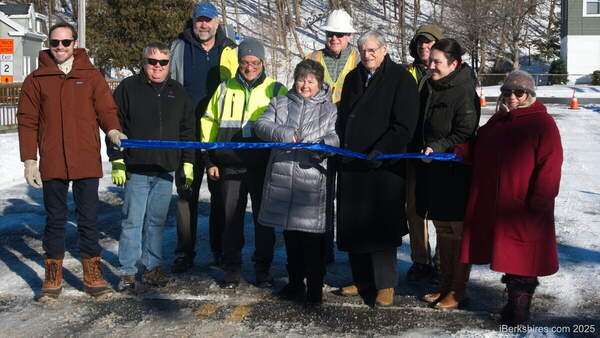Pipeline Digging Could Yield Ancient Info
.jpg) Previous pipeline projects have prompted archaeological digs that turned up evidence of earlier than estimated occupancy of the Berkshires. Images courtesy of UMASS-Amherst Archaeological Services. Previous pipeline projects have prompted archaeological digs that turned up evidence of earlier than estimated occupancy of the Berkshires. Images courtesy of UMASS-Amherst Archaeological Services. |
PITTSFIELD, Mass. — Controversy has been boiling locally since last spring over Tennessee Gas Co.'s proposed Northeast Energy Direct Project, a pipeline that would route fracked natural gas from Pennsylvania to Dracut.
As towns in North and Central Berkshires have vetted the project, all manner of considerations have been debated — energy needs and costs, jobs, environmental impacts, safety concerns.
While clearly paling in scale to these issues, and hardly relevant to whether or not the project should move forward, there is one potential aspect that has not yet been considered — that of archaeological side effects.
Indeed, in the process of the surveying and construction for past pipelines, a significant amount of historical data has been unearthed from the region's often preColonial history.
Prehistoric sites were uncovered during pipeline-related work at several points in recent decades, yielding a variety of informative signs of ancient Native American habitation. In 1988, artifacts were first yielded during a reconnaissance by Boston University archaeologists of a six-mile corridor in Pittsfield as part of Tennessee Gas Co.'s NOREX project.
Another site of habitation was uncovered two years in a subsequent survey slightly east of that area in 1990.
During this period, our understanding of when and how the Berkshires had been occupied by earlier peoples was being revolutionized. It had long been thought that the presence of native peoples in these parts had been limited to the past few centuries, with the arrival of Mahican tribes not long before European settlers first began creeping into the westernmost part of Massachusetts.
This view was then just beginning to be rewritten, and pipelines were not the only kind of construction project leading to key archaeological finds in this evolution of thought.
In 1983, a survey in Pittsfield was conducted by Dunn Geoscience for the realignment of Route 7 (Upper North Street). During this process, another prehistoric site was examined that was ultimately identified as a hunting camp from the Late Archaic Period, which ended about 3,400 years ago.
A few years later in 1987, more surveying as part of a study for the proposed Pittsfield bypass generated multiple native sites, including some near Onota and Pontoosuc lakes, places that had long been rich in attributed "Indian lore." Analysis by University of Massachusetts archaeologist Leslie Shaw found these rich in small artifacts dating back as much as 4,000 years.
Four more prehistoric sites in Pittsfield were located in preparation for a GE/Altresco pipeline across the city in 1992, but it was not until the following year that some truly significant discoveries began to emerge, farther south as part of a larger pipeline project.
Work associated with Tennessee Gas' Northeast Settlement Expansion Project in the early '90s first lead archaeologists onto the trail of ground breaking evidence of intensive prehistoric activity in the southern part of the county, discoveries that altered forever some assumptions about early native life in the region. It was the preparation before this project which lead to focus on sites in and around Stockbridge's Kampoosa Bog, arguably the county's most archaeologically interesting locale.
It was not far from this rich wetland that a small band of Mahicans had been encountered living by encroaching colonists in the early 1700s, but these Algonquin—speakers had been relatively recent arrivals themselves, and in modern times it had long been thought by scholars that year-round occupation had begun not long before Colonial-era settlement began.
A series of digs near Kampoosa in 1993, however, uncovered a voluminous yield of finds ranging from a few centuries back to as early as 6,000 years ago. The untouched quality of the location manifested a wealth of information.
"The site was incredibly intact," a UMASS archaeologist told The Berkshire Eagle in 1994. "It had not been at all disturbed by humans - pristine is a good word for it."
There, pottery and projectile points from a range of eras helped overturn earlier thinking that the peoples who had traversed the Berkshire landscape millenia ago were culturally linked to those of the Connecticut River Valley; instead, strong circumstantial evidence showed a connection to people occupying parts of the Hudson River Valley.
These explorations also demonstrated clear indications of fairly large scale agricultural practices.
Large quantities of cutting and scraping tools at one site there suggested that the spot had been used extensively for butchering and processing animals. More intriguingly, analysis of sediment core samples from Kampoosa Bog sites suggested that intentional burning of forest understory was likely in practice there up to four thousand years ago.
At the time of these finds, such advanced forest management during the Archaic period was still a somewhat radical idea, and evidence from a site of this age no doubt helped shape the current general acceptance of this by most scholars.
In the case of the proposed Northeast Energy Direct project, Tennessee Gas parent company Kinder Morgan has engaged the Hatch Mott MacDonald company as the primary contractor for engineering, surveying, and route planning. This firm has subcontracted with AECOM for overseeing environmental aspects of the project, under which the Louis Berger Group, Inc. will serve as subcontractor in charge of providing all archaeological services.
The NOD in its current incarnation would traverse some 300 miles in Pennsylvania, New York, New Hampshire and Massachusetts, and while a newly proposed route would bring it across the more well-worn territory of existing rights of way, a substantial portion would still be strung across wild lands not previously developed. While ultimate approval of the project by the Federal Energy Regulatory Commission will hinge on issues little related to archaeological discovery, it's impossible to predict what new insights into prehistory could be unearthed as an unintended side effect.
This column is born out of an attempt to break new ground, or at least break out of a certain habitual mold of local history storytelling. While the Berkshires have enjoyed many great historians and much outstanding historical writing, it is my belief that there is a great deal that may have fallen by the wayside in its attempt to hammer out a unified narrative in its vision (and marketing) of itself.
Tags: archaeological, historical sites, Native American, pipeline,

